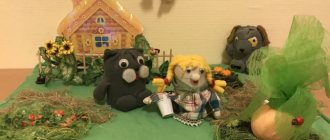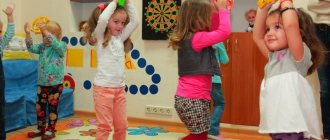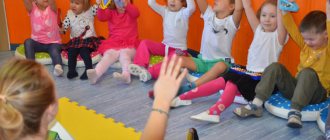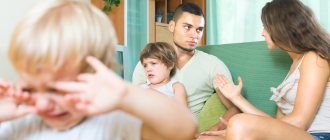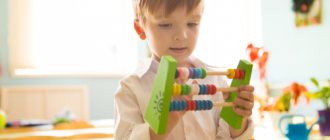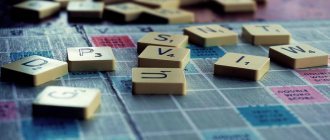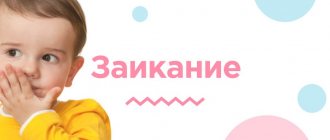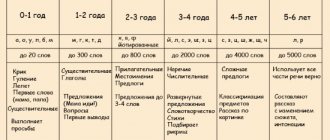LOGORITHMICS. G.A.Volkova
Transcript
1
2 LOGORITHMICS is a system of exercises, tasks, games based on a combination of music, movement, words, aimed at solving correctional, educational and health problems. “The first understanding of speech therapy rhythm is based on a combination of words, music and movement. The relationships between these components can be varied, with the predominance of one of them or the connection between them.” G.A.Volkova
3 RELEVANCE Preserving and strengthening the health of preschool children is one of the most pressing problems of our time. The most accessible means of solving it is physical education and physical activity. Classes for children with elements of logorhythmics: Filled with interesting and meaningful material, vivid impressions, the joy of communication, creativity; Will provide an integrated approach to the implementation of the preschool education program in accordance with the Federal State Educational Standard for Preschool Education; They will introduce pupils to the basic norms and rules of relationships with peers and adults.
4 PURPOSE: Correction and prevention of existing deviations in the child’s speech development through a combination of words and movement.
5 OBJECTIVES: Develop the articulatory apparatus Improve the skill of precision in performing movements in accordance with the text and sense of rhythm Strengthen the ability to navigate in space Develop an ear for music, develop phonemic perception, attention, memory, speech Develop general and fine motor skills
6 COOPERATION OF SPECIALISTS: Logorhythmic classes are considered as integrated with the participation of all specialists and teachers of preschool educational institutions. Each teacher does not work in isolation, but complements and deepens the achievements of others. A physical education instructor is involved in the formation of correct motor skills and abilities, the development of gross motor skills, coordination of movements, and dexterity. Works on regulating breathing. The speech therapist teacher works to correct sound pronunciation, develop phonemic hearing, breathing and prosodic components of speech. Sets a lexical topic, which helps expand vocabulary. The teacher carries out preparatory work on the instructions of the speech therapist, teaches finger games, poems, and movements with the children. Music director - selects music, musical didactic games, exercises, dances, songs, and participates in conducting classes.
7 SAMPLE STRUCTURE OF A LOGORHYTHMIC LESSON: Organizational moment; Rhythmic warm-up; Musical and rhythmic exercises that develop different types of attention, a sense of rhythm and tempo, coordination of speech with movement, regulating muscle tone; Listening to music. Singing; Exercises aimed at developing facial, articulatory and fine motor skills; Exercises to develop physiological and speech breathing; A game; Relaxation; Summarizing.
8 MEANS OF LOGORHYTHMICS: Introductory walking, orientation in space Dynamic exercises for regulating muscle tone Articulation exercises Rhythmic games Outdoor games, round dances, physical exercises Communication games Playing musical instruments Finger games, fairy tales Pure tongues, speech games Singing songs, vocalizations Exercises for the development of attention and memory
9 EXPECTED RESULTS OF LOGORHYTHMIC CLASSES strengthening of physical and mental health; improvement of basic movements; development of cognitive activity; expanding ideas about the world around us, developing a friendly attitude towards adults and peers; nurturing a culture of verbal communication and behavior.
10 CONCLUSION: Practice shows that physical education classes with elements of logorhythmics develop speech and the auditory system, promote breathing regulation, increase overall tone, which is reflected in the correction of speech defects, as well as improving attention and memory.
11 LITERATURE: Kartushina M.Yu. Notes of logorhythmic classes with children 5-6 years old. M.: Pedagogy, 2008 Boromykova O.S. Correction of speech and movement with musical accompaniment: St. Petersburg: Detstvo-press, 1999 Volkova G.A. Logopedic rhythmics-m.: Pedagogy, 2002 Nishcheva N.V. Speech therapy rhythm in the system of correctional and developmental work in kindergarten. /educational manual. St. Petersburg: Publishing House Detstvo-Press LLC, 2014 Kopylova S.F. Physical education classes with elements of logorhythmics. Volgograd: Teacher, 20012
12
13
14 Thank you for your attention!
Everything around us lives according to the laws of rhythm. The change of seasons, day and night, heart rate and much more are subject to a certain rhythm. Any rhythmic movements activate the human brain.
Music is also of great importance. The influence of music on a person’s mental and physical state was known back in antiquity. Scientists of Ancient Greece, such as Pythagoras, Aristotle, Plato and others, drew the attention of their contemporaries to the healing capabilities of music, which, in their opinion, established proportional order and harmony in the human body. Research on the mechanism of the influence of music on humans, conducted by scientists V. M. Bekhterev. I. M. Dogel, I. R. Tarkhanova and others showed that positive emotions evoked by music increase the tone of the cerebral cortex, stimulate breathing, blood circulation, and improve metabolism. The sound of pleasant melodies contributes to the emergence of positive emotional arousal, which in turn enhances attention and tones the central nervous system.
Already at the beginning of the 20th century. systems of rhythmic education appear, aimed at developing the plasticity of movements with the help of rhythmic music. A striking example is the world-famous system of musical and rhythmic education, developed by the Swiss teacher and composer J.E. Dalcroze. In his opinion, under the influence of external rhythmic stimulation, an “internal rhythm” is purposefully cultivated (this can be understood as a sense of rhythm), which contributes to the formation of a person’s physical and spiritual beauty. It was J.E. Dalcroze formulated some provisions that were later developed into the idea that rhythm is an independent essence of biological systems and has a significant impact on all life-supporting systems of the body, incl. and higher mental functions.
Works of teachers of the early 20th century V.A. Greener, N.S. Samoilenko, Yu. A. Florenskaya and others made it possible to create speech therapy rhythms, which is one of the important speech therapy technologies. Speech therapy rhythms can be included in the correctional pedagogical process for any type of speech disorder. The use of singing, speech exercises, active and role-playing games in the process of logorhythmic exercises promotes the development of speech breathing, mobility and activity of speech motor skills, coordination of the activity of all parts of the peripheral speech apparatus, and all together contributes to the smoothness of speech utterance.
The combination of music, rhythm, movements and speech exercises in the process of speech therapy rhythms actively affects the central nervous system, positively influencing the state of higher mental functions, regulating the emotional state.
Currently, speech therapy has developed a number of proprietary methods for speech therapy rhythms, which are used by practitioners in the system of correctional work with children with various speech disorders (G. A. Volkova, N. A. Rychkova, G. R. Shashkina, etc.) .
According to G. A. Volkova et al., they are aimed at overcoming speech disorders by developing the motor sphere in combination with words and music.
This is one of the forms of kinesitherapy, which is a system of motor exercises in which various movements are combined with the pronunciation of certain speech material (phrases, words, syllables, sounds), aimed at the formation of phonetically correctly formed speech.
The state of motor functions affects speech performance. It is known that the melody of the native language is an innate characteristic of prosody, which includes the pitch, rhythm and intensity of the voice, typical for each nation. Sound, verbal, and musical forms of speech are acquired by the child before their semantic meaning is perceived in the form of repetition of sounds. Therefore, such types of speech as poems, listing the days of the week and months are quickly memorized by preschoolers through their rhythmic repetition. In preschool childhood, as the vocabulary accumulates and lexico-grammatical structuring develops, the child acquires the ability to pronounce a phrase that is complete in semantics and intonation in a single exhalation, and the physiological irregularity of speech utterance gradually disappears, leading to fluency of speech. Speech rhythm is one of the most complex types of rhythmic activity of the central nervous system. It participates in the implementation of the most important activities of the human brain - perception, generation and reproduction of speech.
Logorhythmics is a system of exercises, tasks, games based on a combination of music and movement, words and movement, music, words and movement, aimed at solving correctional, educational and health problems.
The inclusion of speech therapy rhythm classes in a set of measures to overcome general speech underdevelopment of various origins in preschool children opens up additional opportunities for their successful development and learning.
Logorhythmics is the most emotional part of speech therapy correction, combining the correction of speech disorders with the development of sensory and motor abilities of children . Logorhythmic activities include health-saving technologies that have a beneficial effect on the child’s body. Logorhythmics helps to effectively increase the level of sound pronunciation, mastery of word structure, activation and expansion of children's vocabulary. It is known that children suffering from general speech underdevelopment often have disorders of both auditory perception and the emotional-volitional sphere, and underdevelopment of rhythmic hearing. They are characterized by difficulties in recreating the rhythmic structure of poetic texts and words. The solution to this problem is simplified due to the interconnection and close interaction of three components: rhythm, words and movement. Certain exercises, rhythmic chants, singing individual syllables and phrases have a positive effect on the state of speech motor skills. Logorhythmic activity promotes the development of auditory functions, spatial concepts, creative and intellectual abilities, promotes the development of empathy, the development of communication skills, and the correction of the speech functional system.
The goals and objectives of logorhythmics are reflected in the current situation in preschool educational institutions. In connection with the revision of the education system as a whole, and the implementation of the Federal State Educational Standard, the results of mastering the Preschool Education Program are presented in the form of targets that outline the characteristics of the child’s possible achievements.
Logorhythmics helps solve the problems of the Preschool Educational Standard. In joint direct educational activities using logorhythmics, children’s higher mental functions develop: perception, memory, thinking and speech, as well as the emotional-volitional sphere. Logorhythmic activity develops the skills and abilities of children, helps the child, bringing him closer to meeting target guidelines at the stage of completing preschool education. Direct educational activities in logorhythmics are structured in such a way that the tasks of training, education and correction are solved at an unconscious, involuntary level, are accompanied by a bright positive emotional background and allow the teacher to organize a holistic educational and correctional process.
Elements of logorhythmic exercises can be used thanks to the flexible mode of preschool educational institutions throughout the day and on the street, during direct educational activities, as physical education minutes, before bedtime or after sleep in the form of breathing exercises, and since logorhythmic exercises are thematic in nature, their selection can be based on for comprehensive - thematic garden planning.
The main task in speech therapy rhythm is improving speech through the development of auditory attention based on the formation of a sense of rhythm in the process of movement. The objectives of speech therapy rhythms: health-improving, educational (cognitive), educational, correctional. Educational objectives include familiarization with a variety of movements, the formation of motor skills and abilities, and concepts of the spatial organization of the body. Educational tasks include nurturing and developing a sense of the rhythm of a piece of music and one’s own rhythm of movement, developing the ability to move rhythmically to music and be critical of one’s movements and speech. The health-improving focus of logorhythmic effects includes
- General developmental exercises.
- Breathing exercises.
- Gymnastics for the eyes.
- The simplest elements of a message.
- Development of the singing voice, singing breathing.
The correctional focus of logorhythmic classes is due to the step-by-step nature of the work in eliminating various speech disorders. )
The main objectives of logorhythmic influence are:
- development of auditory attention and phonemic hearing;
- development of musical, sound, timbre, dynamic hearing, sense of rhythm, singing range of the voice;
- development of general and fine motor skills, kinesthetic sensations, facial expressions, pantomime, spatial organization of movements;
- nurturing the ability to transform, expressiveness and grace of movements, the ability to determine the nature of music, coordinate it with movements;
- fostering switchability from one field of activity to another;
- development of speech motor skills for the formation of an articulatory base of sounds, physiological and phonation breathing;
- formation and consolidation of the skill of correct use of sounds in various forms and types of speech, in all communication situations, nurturing the connection between sound and its musical image, letter designation;
- formation, development and correction of auditory-visual-motor coordination;
The following methods and techniques are used in logorhythmics:
Visual methods provide vividness of sensory perception and motor sensations. Each method has a whole complex of various techniques that are united by the commonality of the problem and a unified approach to solving it. In the process of teaching motor actions, methodological techniques are selected taking into account the degree of assimilation of motor material, the general development of children, their physical condition, and age characteristics.
Thus, when teaching movement, various techniques are used:
1) visual - the teacher shows a sample of movement or individual motor elements; imitation of patterns of surrounding life; the use of visual references when negotiating space, visual aids (photos, TV shows, etc.);
2) tactile-muscular - inclusion of various aids in motor activity. For example, when walking, arched gates are placed on the path: in order to step over them, you need to raise your leg high.
3) visual-auditory - sound regulation of movements. The best auditory visual aid is instrumental music or song. To regulate movements, folk jokes, poems in the form of two to four lines, sounds of a tambourine, etc. can be used.
Verbal methods appeal to the consciousness of children, help them comprehend the task at hand and perform motor exercises.
The verbal method uses the following techniques:
1) a brief explanation of new movements based on the existing life experience of children;
2) an explanation accompanying a specific display of movement or clarifying its elements;
3) instructions necessary when reproducing the movement shown by the teacher or when children independently perform exercises;
4) conversation when introducing new exercises and outdoor games, when it is necessary to clarify motor actions, clarify the plot of an outdoor game, etc.;
5) questions to children before they perform movements to understand the sequence of actions, check their ideas about the images of a plot-based outdoor game, play actions, etc.;
6) commands, orders and signals that require different intonation and dynamics from the teacher. Counting rhymes and game openings can be used as commands and signals;
7) a figurative plot story, which serves to develop the expressiveness of movements and better transformation into a game image. A plot story of 1.5 - 2 minutes evokes a recreating imagination, promotes visual perception of the entire situation, stimulates emotional reproduction;
 verbal instructions, with the help of which traces of 9) old impressions are revived in new combinations and combinations, it becomes possible, with the help of verbal instructions and explanations, to form new temporary connections, to form new knowledge and skills.
verbal instructions, with the help of which traces of 9) old impressions are revived in new combinations and combinations, it becomes possible, with the help of verbal instructions and explanations, to form new temporary connections, to form new knowledge and skills.
The formation of motor skills in a child depends on the degree of awareness of the content and structure of the exercise.
Practical methods provide an effective test of the correct perception of movement using muscle-motor sensations. Varieties are gaming and competitive methods.
Like any science, logorhythmics has its own principles.
- the principle of systematicity (consistent presentation of the material, the use of various exercise options, step-by-step and justified use of the material);
Elements of speech therapy rhythms are included in speech therapy classes every day. Logorhythmic classes are held once a week. This practice gives a lasting result: a positive restructuring of various systems occurs in the child’s body and his psychomotor skills: respiratory, cardiovascular, speech motor, sensory.
- the principle of consciousness and activity (manifestation of the child’s active and conscious attitude to activity; emotionality, musical imagery, a variety of games, play exercises, techniques encourage children to be active);
- the principle of clarity (implemented through a visual display of movement, illustrations, a figurative word helps to present a certain image to children);
- the principle of accessibility and individualization (the age of the children and their individual characteristics are taken into account).
- principle of phasing. The logical sequence of acquiring, consolidating and improving the entire complex of knowledge, skills and abilities is determined. It is based on the “From simple to complex” approach.)
- development principle (it is necessary to take into account the individual development capabilities of the child’s personality)
- principle of comprehensive influence (logorhythmic exercises influence the entire child’s body)
Ensuring the overall impact of classes on the body, since speech therapy rhythms increase the overall fitness of the body, improve general neuro-reflex regulatory mechanisms and contribute to the complexity of corrective effects.
- the principle of taking into account symptoms (taking into account the nature of the disorders, the physical capabilities of the child); The physical capabilities of children correlate with speech pathology. Based on this, the appropriate load is dosed. At the same time, classes are built on an emotional upsurge, with a quick change of activities so that the children do not get tired and also do not lose interest.
- principle of complexity (combination of influence by different means).
The effectiveness of work to improve children's pronunciation is possible only with the joint efforts of all preschool teachers in this direction.
The teacher-speech therapist sets a lexical topic, draws up lesson notes, and conducts the lesson.
The teacher-defectologist selects and performs exercises in accordance with the directions of correctional work and speech therapy topics
The music director selects music, musical didactic games, exercises, dances, songs, and participates in conducting classes.
The teacher carries out preparatory work on the instructions of the speech therapist, teaches finger games, poems and movements with the children.
A physical education instructor teaches outdoor games.
Parents learning speech material with their child at home
The main form of work is an individual approach to each child, taking into account his age, psychophysiological and speech capabilities.
Possibilities for incorporating logorhythmics into life activities in kindergarten:
1. Morning exercises with chants and onomatopoeia.
2. Saying nursery rhymes, sayings, sayings during routine processes - washing, dressing for a walk, preparing for classes.
3. Speech games before meals.
4. Logorhythmic pauses in classes.
5. Dynamic pauses between classes.
6. Physical education theatrical classes using speech material.
7. Invigorating gymnastics with onomatopoeia.
8. Outdoor games with singing (on a walk).
9. Games of low mobility (in a group).
10. Logorhythmic leisure.
Logorhythmic activities are a technique based on the connection between words, music and movement and include finger, speech, musical-motor and communicative games. The relationships between these components can be varied, with one of them predominant.
Logorhythmic classes contribute to the development of all components of speech, auditory functions, speech functional system, motor sphere, manual and articulatory motor skills, memory, attention, cognitive processes, creative abilities of children, and cultivate moral, aesthetic and ethical feelings. Logorhythmic classes are based on the close connection of words, movement and music. A logorhythmics lesson includes the following types of exercises, which are divided into two groups:
1) exercises that develop non-speech processes (general and fine motor skills, coordination of movements, orientation in space, regulation of muscle tone, development of a sense of musical meter, tempo, rhythm, development of mental processes); 2) speech exercises (development of breathing, voice, tempo and intonation of speech, development of articulation and facial expressions, work on correct sound pronunciation and the formation of phonemic hearing. Certain tasks are selected depending on the speech defect.
Development of non-speech processes Walking and marching (introductory and final exercises) Walking is a natural form of human movement. It is carried out through precise coordination of movements of the arms and legs. Children with speech disorders are usually awkward: their walking is unsteady and their gait is uneven. They often shuffle their feet when walking. Therefore, tasks for learning to walk and lightly run to music are necessarily included in every logarithmic lesson. Regulation of muscle tone. Children with speech pathology often experience not only impaired articulation, but also deficiencies in fine and gross motor skills. They are usually awkward, their movements are poorly coordinated. The reason for this lies in impaired muscle tone. Most often, children who speak poorly are overly tense, abrupt in their movements, and fussy. Sometimes, on the contrary, there is a decrease in muscle tone, and as a result, lethargy of general movements. To correct these motor skills deficiencies, it is necessary to teach children the ability to regulate their muscle tone: relax and tense certain muscle groups. Development of attention and memory. Counting exercises. Children with speech disorders often have insufficient development of motor, visual, and especially auditory attention and memory. Therefore, during logorhythmics classes, exercises are required to develop all types of attention and memory. As a result of performing specially selected exercises, preschoolers gradually develop a quick and accurate reaction to various types of stimuli. Children learn to concentrate by exerting certain volitional efforts to do so. It's not just stability that's improved. But also switchability of attention - the ability to move from one action to another. In parallel with the development of all parameters of voluntary attention, children’s memory gradually improves. Both motor and visual, as well as auditory. Development of a sense of musical time (meter) Meter is a rhythm in which all durations are the same, and accents of equal strength appear at certain (equal or unequal) intervals of time. In logorhythmic classes, children are given an idea of accent as a shock moment in sound, i.e., the forceful emphasis of a separate sound in music. Having heard an accent against a background sound of equal strength, the child must give some kind of conditioned signal. First, they learn to identify an unexpected accent and only then a metrical (evenly repeated) accent in music. Once children have mastered this skill, they can begin to work on the most difficult part – the transitional accent. Development of a sense of musical tempo. Tempo is the speed of music performance, which is determined by the frequency of alternation of the main metric beats. The pace can be slow, moderate or fast.
Development of a sense of musical rhythm. Children with speech pathology often have deficiencies in the perception of rhythm. This is expressed in the fact that they are not musical, as a rule, they have difficulty memorizing poetry, since they do not perceive the musical rhythm of the poem, do not catch its rhymes. These preschoolers have difficulty reproducing the syllabic structure of words consisting of three or more syllables. Trying to pronounce a long word, the child skips or rearranges its syllables and sounds. Musical rhythm is the alternation and ratio of sound durations in a piece of music. Rhythmic units are the durations of individual sounds and pauses. Playing musical instruments Children's musical instruments are often used in classes. Thanks to playing with musical toys, preschoolers develop a sense of musical rhythm and tempo, improve attention, ear for music, improve finger motor skills, and develop breathing (when playing wind instruments). Playing music promotes the development of creative abilities. Finger games Physiological scientists have proven that the development of finger mobility contributes to a more active speech development of the child. This is explained simply: representatives of the speech and finger zones in the human cerebral cortex are in close proximity and influence each other. Therefore, by developing fine motor skills of a child’s fingers, we also contribute to his rapid speech development. To improve fine movements of the fingers, various finger games with singing or games with small objects accompanied by music are performed with children. Outdoor games The main form of activity for children is play. Outdoor games develop emotional and volitional qualities in children, teach them a wide variety of types of movement - walking, running, hopping, jumping, and teach them to navigate in space. All verbal material - songs, nursery rhymes, sung or spoken by children during outdoor games, serves another important purpose - to consolidate various groups of sounds in the speech of preschoolers.
Listening to Music Music by its nature is very emotional and imaginative. Through musical means, logorhythmic classes gradually develop children’s artistic perception. Children are offered to listen to both vocal and instrumental music. The closest thing to instrumental music is music written on a specific subject, as well as visual music, in which the composer uses the means of music to imitate, for example, the singing of birds, the howling of the wind, the sound of rain, the roar of a train, etc. Speech development and correction of speech disorders
The development of breathing is one of the first and very important stages of correctional influence on children - speech pathologists, regardless of the type of their speech defect. The purpose of breathing exercises is to promote the development of correct diaphragmatic breathing, the duration of exhalation, its strength and gradualness. The teacher is faced with the task of developing first physiological (non-speech) breathing in children, and then, based on it, speech breathing. Unlike physiological breathing, which occurs automatically, speech breathing is voluntary. During physiological breathing, inhalation and exhalation are carried out through the nose, and the inhalation is equal in duration to the exhalation. During speech breathing, after a short deep breath there is a pause and only then a long exhalation, at the moment of which the speech act is carried out. Voice development The vocal apparatus produces sounds that vary in pitch, strength and timbre. Their totality determines a person’s voice. The pitch of the voice is a rise or fall in tone (the transition from a high voice to a low voice, and vice versa). The strength of the voice is the pronunciation of sounds with a certain volume: loud, normal, quiet. The timbre of the voice is its qualitative coloring. The voice can be ringing, dull, trembling, dull, loud, etc. The task of the teacher is the following: firstly, to develop in children the basic qualities of the voice - strength and height, and secondly, to teach them to speak without tension, changing their voice in accordance with the situation. Rate of speech Rate of speech refers to the speed at which it flows over time. If the rate of speech is accelerated, then the intelligibility, clarity of speech, and articulation of sounds deteriorate. Intonation expressiveness of speech Intonation is a complex complex of all expressive means of spoken speech, including elements common to music, such as melody, tempo, rhythm, pausing and logical stress (in music this is an accent). Thanks to intonation, a thought acquires a complete character; additional meaning can be given to a statement, even changing the meaning to the opposite. Singing When singing, there is an interaction between singing intonation, auditory and muscle sensations. In addition, singing improves mood, develops artistic taste and creativity.
Speech with movement Allows you to improve general and fine motor skills, develops clear coordinated actions in conjunction with speech.
Facial expressions are facial movements that express a person’s internal emotional state. Facial expressions are closely related to articulation and, by stimulating the child to depict various emotions on his face, we contribute to the development of not only facial, but also articulatory motor skills, in particular, we develop the mobility of the muscles of the lips and cheeks. ArticulationThe movable organs of articulation (speech organs) include the tongue, lips and jaws. Articulation exercises in classes are performed to rhythmic music or counting.
Phonemic perception This is a clear distinction by ear of all sound units of the native language, including acoustically close sounds such as hard and soft, deaf and voiced. Work on the formation of phonemic perception begins with the development of auditory attention based on the material of non-speech (noise and musical) sounds. Correction of sound pronunciation disorders At the stage of automation of isolated sound, children are offered games to clearly pronounce it. It is very useful to associate sounds with any musical images. GrammarIn logorhythmic classes it is possible to consolidate the knowledge of grammar acquired in speech therapy classes. In the form of an outdoor game or a vocalization game, grammatical tasks arouse keen interest and, therefore, are better absorbed by preschool children. Vocabulary Within the framework of logorhythmic education, it is necessary to carry out one very important task - to expand the vocabulary of children.
Structure and content of speech therapy rhythm classes
Each lesson is conducted on a single lexical topic in a playful way. It lasts from 15 to 35 minutes depending on the age of the children. The lesson consists of three parts: preparatory, main and final.
The preparatory part lasts from 3 to 7 minutes. This time is necessary to prepare the child’s body for motor and speech loads. Exercises such as turning and bending the body, various types of walking and running with arm movements, changing the direction and pace of movement, and changing lanes are used. With the help of these exercises, children learn to navigate in space, in the right-left direction of movement, etc. Introductory exercises set the stage for a varied tempo of movement and speech with the help of music. To improve coordination of movements and to train stability, exercises with stepping over gymnastic sticks, cubes, and hoops are widely used. They are aimed at training attention, memory and orientation, and inhibitory reactions.
The main part takes from 10 to 25 minutes and includes the following types of exercises:
- Walking and marching in different directions;
- Exercises to develop breathing, voice, articulation;
- Exercises adjustable muscle tone;
- Exercises that activate attention;
- Exercises regulating muscle tone;
- Exercises to develop movement coordination;
- Exercises for coordination of speech with movement;
- To coordinate singing with movement;
- Listening to music to relieve emotional and muscle tension;
- Counting exercises;
- Speech exercises without musical accompaniment;
- Exercises that develop a sense of rhythm;
- Exercises that develop a sense of musical tempo;
- For the development of fine motor skills;
- For the development of speech and facial movements;
- Rhythmic exercises;
- Singing;
- Playing musical instruments;
- Musical independent activity;
- Games (static, sedentary, mobile);
- Exercises for developing creative initiative.
The final part takes from 2 to 7 minutes. It includes exercises to restore breathing, relieve muscle and emotional tension, calm walking, and relaxation exercises.
The structure of the lesson does not always include all of the listed elements. The sequence of correctional work varies in accordance with the nature of speech disorders, individual and age characteristics of the children. Under the influence of the regular inclusion of logorhythmic games and exercises, children experience a positive restructuring of the speech motor, cardiovascular, respiratory, motor, sensory and other systems, as well as education of emotional - volitional personality traits. Therefore, it is important to include logarithmic games and exercises in various activities. Thus, the effective use of logorhythmic games and exercises contributes to the development of all components of oral speech in children of primary preschool age.
